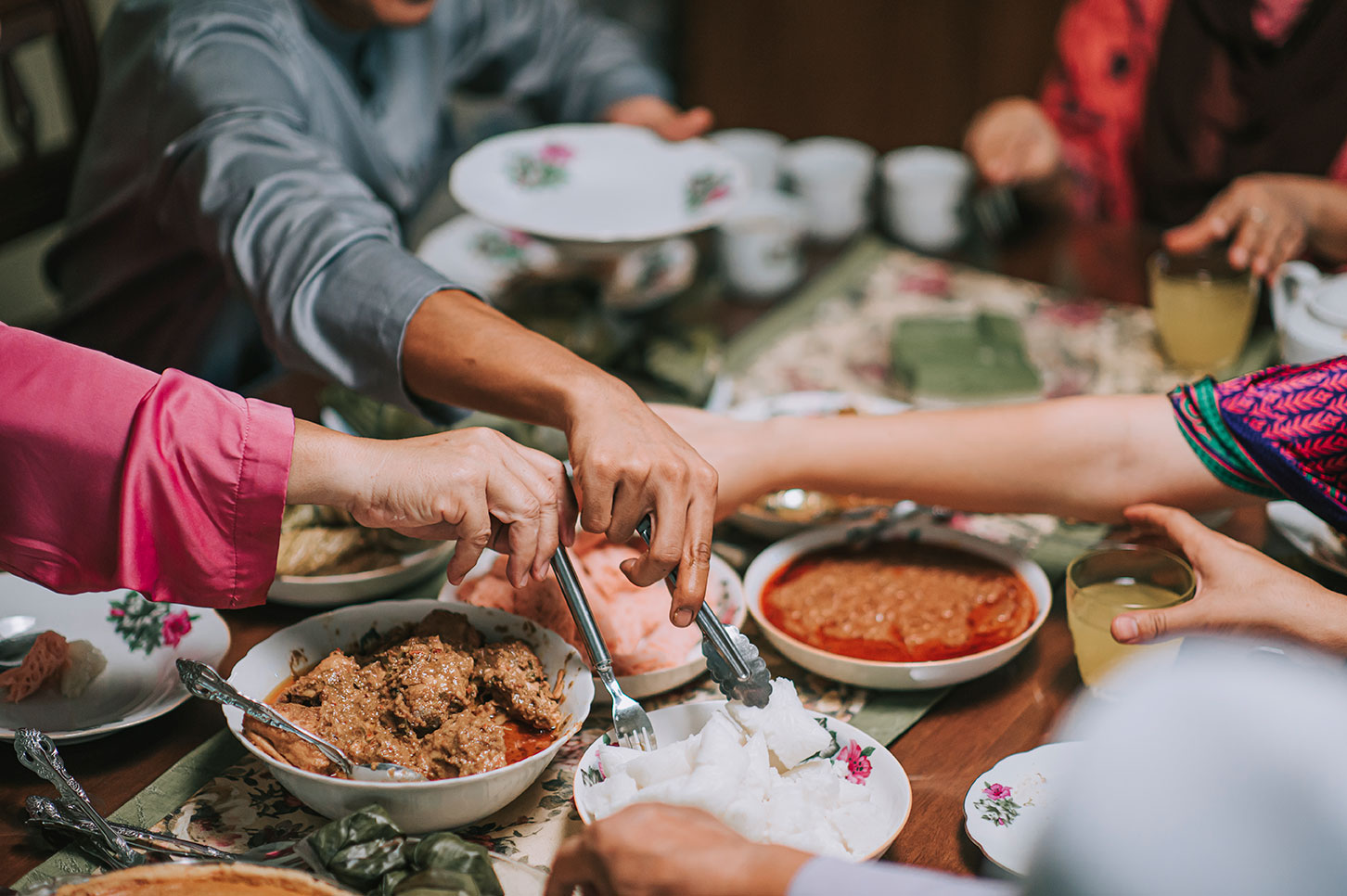Six Food Safety Tips to Remember for Cooking while Fasting
Posted by Zoya Sattar, Public Affairs Specialist, Food Safety and Education Staff

It’s a special time of year as we welcome the spring season, and with it the Islamic holiday of Eid al-Fitr, or Eid for short. Many families and communities will be celebrating their Eid meals with traditional foods. These holiday meals often have cultural significance and may require foods to be prepared early, so that religious obligations are completed prior to gathering and enjoying the meals. This provides an extended opportunity for foodborne illness to ruin major holiday dishes. Follow these food safety steps for a safe meal:
#1 Keep Hands Clean Before, During, and After Food Prep
Handwashing is the first step to avoiding foodborne illness. In a recent USDA study, 96% of handwashing attempts failed due to missing all the necessary steps. Wash your hands for at least 20 seconds with soap and water before and after handling food and when switching between ingredients.
#2 Prevent Cross-Contamination of Surfaces and Foods
Cross-contamination is the spread of bacteria from raw meat, poultry, egg, or flour products onto ready-to-eat foods, surfaces, and utensils. Avoid cross-contamination by using separate cutting boards — one for raw meat and poultry, like chapli kebabs and shish taouk, and another for sweet treats made from eggs and flour, like naan khatai and kahk cookies. Clean and sanitize any areas that have touched raw meat and poultry before and after cooking.
#3 Thaw Meat and Poultry Safely
Leaving any frozen package of meat or poultry for more than two hours on the counter at room temperature is dangerous. Even though the center of the package may still be frozen, the outer layer of the food is in the "Danger Zone" between 40 and 140 F — a temperature where foodborne bacteria multiply rapidly and cause foodborne illness. Plan for refrigerator, cold water, or microwave thawing of meats such as beef used in a classic biryani or rendang.
#4 Cook to a Safe Internal Temperature
Color is never a reliable indicator of safety and doneness. Use a food thermometer to ensure the following safe minimum internal temperatures:
- Cook fish to 145 F.
- Cook beef, lamb and veal steaks, chops and roasts to 145 F. For safety and quality, allow meat to rest for at least three minutes before carving or consuming.
- Cook ground beef, lamb and veal to 160 F.
- Cook egg dishes to 160 F.
- Cook poultry (whole or ground) to 165 F.
Also pay special attention to flour and egg products to ensure your guests do not consume raw items.
#5 Keep Hot Foods Hot, and Cold Foods Cold
Food should not be left in the “Danger Zone” for more than two hours. Perishable foods, such as kebabs or custard, should be discarded if left out for longer than two hours.
To prevent food waste, refrigerate or freeze perishable items within two hours, or keep hot foods hot and cold foods cold. Keep cold foods at a temperature of 40 F or below by keeping food nestled in ice or refrigerated until ready to serve. Keep hot foods at a temperature of 140 F or above by placing food in a preheated oven, warming trays, chafing dishes or slow cookers.
#6 Use or Freeze Leftovers within Four Days
Leftovers should be stored within two hours of cooking. Divide leftovers into smaller portions and refrigerate or freeze them in shallow containers, which helps leftovers cool quicker than storing them in large quantities. Place leftovers into airtight containers to help keep bacteria out and retain moisture.
Leftovers can be kept in the refrigerator for three to four days or frozen for three to four months. Although safe indefinitely, frozen leftovers can lose moisture and flavor when stored for longer times in the freezer.
Have questions?
Talk to a food safety expert and get answers to your questions about food safety.
- For non-meat food products (cereals, fish, produce, fruit juice, pastas, cheeses, etc.), call the FDA at 1-888-SAFEFOOD (1-888-723-3366).
- For meat, poultry and egg products, call the USDA Meat and Poultry Hotline at 1-888-MPHotline (1-888-674-6854).

